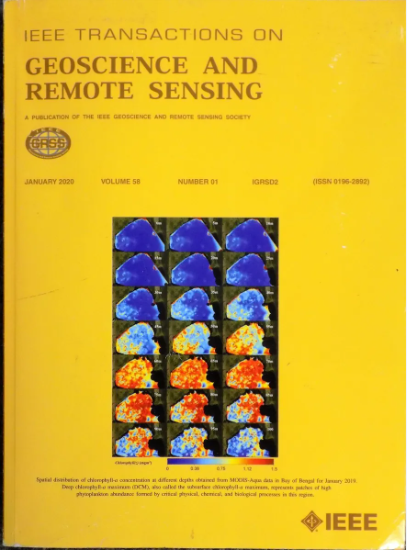A Direct Estimation Method for Daily Mean Albedo With Multiple Observations From FY-4A AGRI and Himawari-8 AHI
IF 7.5
1区 地球科学
Q1 ENGINEERING, ELECTRICAL & ELECTRONIC
IEEE Transactions on Geoscience and Remote Sensing
Pub Date : 2024-09-11
DOI:10.1109/TGRS.2024.3458178
引用次数: 0
Abstract
Surface albedo plays a significant role in Earth’s energy budget and global climate change. The spaceborne remote sensing technique is efficient for deriving and monitoring long-term surface albedo over large regions. Numerous satellite surface albedo products have been established and used for climate change research. However, the surface daily mean albedo is not regularly produced from satellite observations, even though it is more critical than instantaneous albedo for calculating daily shortwave radiation budget. Compared to polar-orbiting satellites, the geostationary satellites offer greater potential for mapping daily albedo with more diurnal observations. This study proposes an innovative multisensor combined direct estimation algorithm, which takes advantage of multiple clear-sky observations from new-generation geostationary satellite sensors FengYun-4 Advanced Geostationary Radiation Imager (AGRI) and Himawari-8 Advanced Himawari Imager (AHI) taken during the same day to improve the surface albedo estimation. Compared to albedo estimates derived from a single sensor, the root mean squared error (RMSE) decreases from 0.030 to 0.022 at OzFlux sites and from 0.040 to 0.031 at Heihe sites. Moreover, an information index of top-of-atmosphere (II_TOA) reflectance is proposed to quantify the amount of information that multiangular TOA observations carry in the surface albedo estimation. As a result, combining observations from two sensors increases such information by 20%, as compared to observations from a single sensor. This study demonstrates the combined multisensor direct estimation method has significant potential for improving surface albedo estimation.利用 FY-4A AGRI 和 Himawari-8 AHI 的多次观测数据直接估算日平均反照率的方法
地表反照率在地球能量预算和全球气候变化中发挥着重要作用。空间遥感技术可以有效地推导和监测大面积的长期地表反照率。许多卫星地表反照率产品已经建立并用于气候变化研究。然而,尽管地表日平均反照率比瞬时反照率对计算日短波辐射预算更为重要,但卫星观测并没有定期生成地表日平均反照率。与极轨卫星相比,地球静止卫星具有更大的潜力,可以通过更多的昼夜观测绘制日反照率图。本研究提出了一种创新的多传感器组合直接估算算法,利用新一代地球静止卫星传感器 "风云四号 "高级地球静止辐射成像仪(AGRI)和 "向日葵八号 "高级向日葵成像仪(AHI)在同一天拍摄的多个晴空观测数据来改进地表反照率估算。与单个传感器得出的反照率估计值相比,OzFlux站点的均方根误差(RMSE)从0.030降至0.022,黑河站点的均方根误差从0.040降至0.031。此外,还提出了大气顶部反射率信息指数(II_TOA),以量化多角度 TOA 观测在地表反照率估算中的信息量。结果表明,与单个传感器的观测结果相比,结合两个传感器的观测结果可增加 20% 的信息量。这项研究表明,组合式多传感器直接估算方法在改进地表反照率估算方面具有巨大潜力。
本文章由计算机程序翻译,如有差异,请以英文原文为准。
求助全文
约1分钟内获得全文
求助全文
来源期刊

IEEE Transactions on Geoscience and Remote Sensing
工程技术-地球化学与地球物理
CiteScore
11.50
自引率
28.00%
发文量
1912
审稿时长
4.0 months
期刊介绍:
IEEE Transactions on Geoscience and Remote Sensing (TGRS) is a monthly publication that focuses on the theory, concepts, and techniques of science and engineering as applied to sensing the land, oceans, atmosphere, and space; and the processing, interpretation, and dissemination of this information.
 求助内容:
求助内容: 应助结果提醒方式:
应助结果提醒方式:


